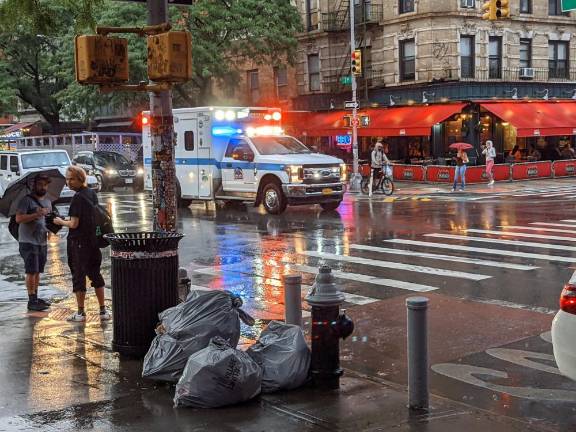Ambulance Sirens: A Reckoning

As a physician living in New York City, my frustration with the extremely high decibel level of virtually every ambulance service must seem contradictory. However, is the noise level generated by these sirens really necessary for the EMS to do its job properly? Should citizens have to put their fingers in their ears to “protect” them from damage from high sound intensity?
Are we honestly expected to suffer in occasional silence and accept the fact that this is the price one pays for living in a city? “At least 10 million adults (6 percent) in the U.S. under age 70 — and perhaps as many as 40 million adults (24 percent) — have features of their hearing test that suggest hearing loss in one or both ears from exposure to loud noise,” the National Institutes of Health wrote in March 2014. Why ambulances that operate in NYC have the loudest, most annoying sirens and the most dangerous for hearing is a mystery.
One of the major issues that has received attention over the last two to three decades is whether the lights and sirens of EMS vehicles make any significant difference in patient management and outcomes. In studies conducted in different cities over the last 30 years, the time reduced in patient transport using sirens and flashing lights compared with runs without these aids was anywhere from 42 seconds to 3.8 minutes. While the times were “faster” they were not clinically significant except in rare circumstances. Despite these conclusions, in one study the number of ambulance responses with lights and sirens was as high as 77.7%.
With heart attacks and strokes it is generally agreed that speed in reaching a facility that can handle these emergencies is crucial. This raises the issue of medical “protocols” to determine who gets lights and sirens and who does not. In Pennsylvania, researchers used a medical protocol that was carried in each ambulance to determine who got the lights and siren treatment. The result was that 92% of patients were transported without lights and sirens. No adverse outcomes were identified.
Crash Risk
In addition, these sirens can actually contribute to accidents involving EMS personnel and the public which are often deadly. A recent study from the National Safety Council highlights the potential increase in crash risk when ambulances operate with lights and sirens. When an ambulance responds to an emergency call without using lights and sirens, the crash rate is 4.6 per 100,000 responses. The crash rate increases to 5.5 when lights and sirens are used. The increase in risk is even greater when the ambulance is transporting a victim. The crash risk without lights and sirens is 7.0 per 100,000 transports, and increases to 16.5 when lights and sirens are used throughout the transport.
Also contributing to the dangers of riding in EMS vehicles is the fact that the reactions of automobile drivers are completely unpredictable such that using lights and sirens put these EMS workers at increased risk. “It is clear that the use of emergency lights and sirens constitutes a clear and present danger for both emergency personnel and the general public,” wrote Dr. Bryan Bledsoe in an online publication in EMS World titled “EMS Myth #4: Lights and sirens save a significant amount of travel time and lives.”
And so what does all this mean to the good people of New York City? It means that while there may be controversy about exactly which emergencies require a siren and possibly flashing lights, there is little question that sirens are being used far too often. The consequences of this use are incredibly high sound intensity levels (“ear splitting”) with subsequent measurable hearing loss. It also highlights the fact that there are many choices for different siren signals that the Fire Department should consider, such as the much less intensive sound that is used by the NYPD.
Changing over to different sirens and using them only when they are medically indicated is up to the NYC Fire Department. Its goals should be not only to provide the most appropriate and safest ambulance services, but also to deal with this issue that is affecting the quality of life in New York City. We should not let the emotional association of sirens and patient welfare and not facts be the reason to perpetuate this often unnecessary and dangerous disturbance.
Dr. Richard P. Gold is a physician living in New York City.